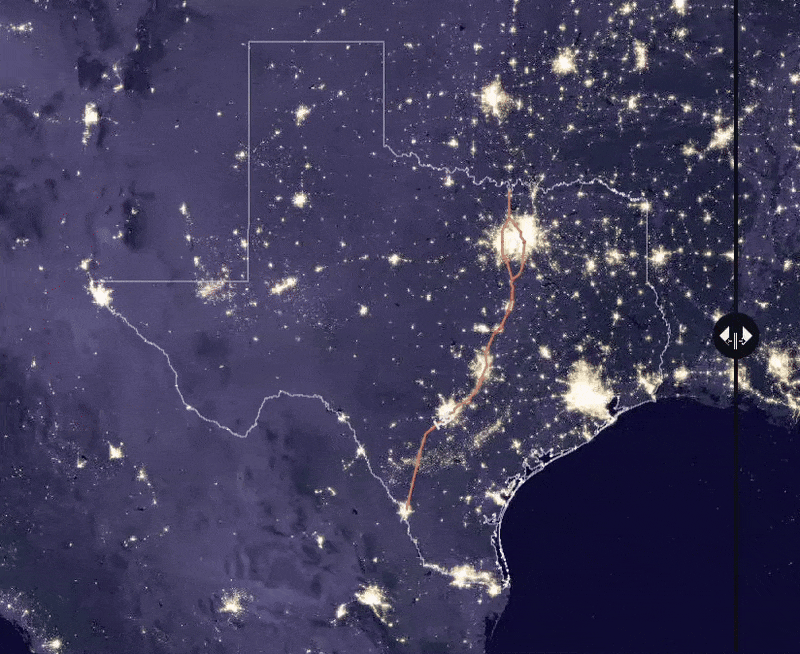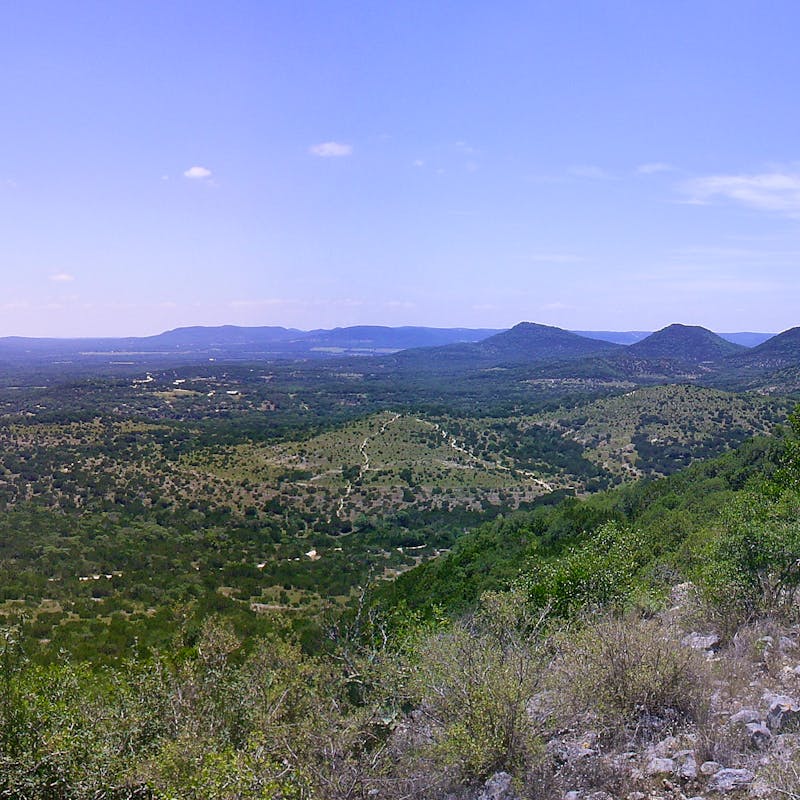The rufa red knot is carried by the wind, its wings spread as it soars above the night skies of Texas. Suddenly, the tiny bird notices a series of bright lights. Curious, it flies downward in the light’s direction. As it gets closer, however, the light turns off. Confused but unbothered, the tireless bird turns upward and resumes its long migratory journey.
What this rufa red knot doesn’t realize is that it just survived a very close call. Those bright lights came from a building with glass windows. Flying into those windows would likely have been fatal for a tiny bird flying at high-speed.
Defenders of Wildlife’s Center for Conservation Innovation has harnessed the power of maps to use alongside our knowledge of imperiled bird species to dive into which areas of Texas are most critical for bird conservation efforts, and how everyday citizens like you can help protect endangered birds like the rufa red knot.
What is the Center for Conservation Innovation?
CCI is a group at Defenders that uses science and technology to find creative and practical solutions for better wildlife conservation.
Why Texas?
Texas is one of the most important locations in the world for birds because it is located at the meeting point of two major migratory flyways. One in three birds migrating through the U.S. each year pass through Texas.
Sadly, spring and fall migrations, during which four billion birds fly over America, are also the deadliest seasons for migratory birds. Over half a billion birds die from crashing into windows every year in the United States.
There are 111 bird species which live or travel across Texas that are Species of Greatest Conservation Need, meaning their populations are declining, they are rare, or in need of attention to maintain a healthy status.
This heat map shows the ranges of the 111 Species of Greatest Conservation Need across Texas. It shows that the highest concentration of imperiled bird species in Texas can be found in the eastern half of the state, with a particular focus on the Southeast coast where birds like the rufa red knot live during the winter.
Where do most bird collisions happen?
This map combines bird collision hotspots with satellite imagery of earth at night showing which areas in Texas have most light pollution. Light pollution is human-made outdoor light that can disorient or confuse birds during flight.
We can see that the areas with the most light pollution also have the highest concentrations of bird collisions. Meaning the more light pollution humans produce, the more likely birds are to collide with human development.
Maps, however, are only as good as the data used to make them. Bigger cities tend to have higher numbers of bird collisions due to increased light pollution, but there may also be more reports in these areas due to a higher number of people collecting data. While we can’t always confirm our theories, the data we observe tells us stories, and if we interpret them correctly, they can have an immense positive impact.
How can we track bird collisions?
Texas is the second largest state in America, with a total area of 268,820 square miles, and a population of over 31 million people. That’s a lot of ground to cover, but thankfully many Texans want to help protect migratory birds by reporting collisions online.
CCI compiled data from iNaturalist, a data science collection platform where everyday citizens can record information, to show where bird collisions occurred inside Texas cities over the past 20 years.
Not only does this information help pinpoint areas to increase awareness around bird collisions, but it can also help inform city planning and building regulations to be more wildlife friendly.
How can I help protect birds?
As efforts to protect imperiled bird species continue, these maps can serve as an important tool for conservationists to focus our efforts on the right places. By reporting bird collisions in your area, you are making an important contribution to preventing future incidents.
Another way to prevent bird collisions is by helping reduce light pollution. In 2017, a campaign called Lights Out, Texas! was launched to protect the billions of migratory birds travelling through Texas. Participants across Texas turn off non-essential outdoor lights between 11pm and 6am. This is just one example, and as peak migration is happening across America, you can help by turning lights off at night anywhere you live. You can also follow Defenders and CCI as we continue our work to protect imperiled bird species.








